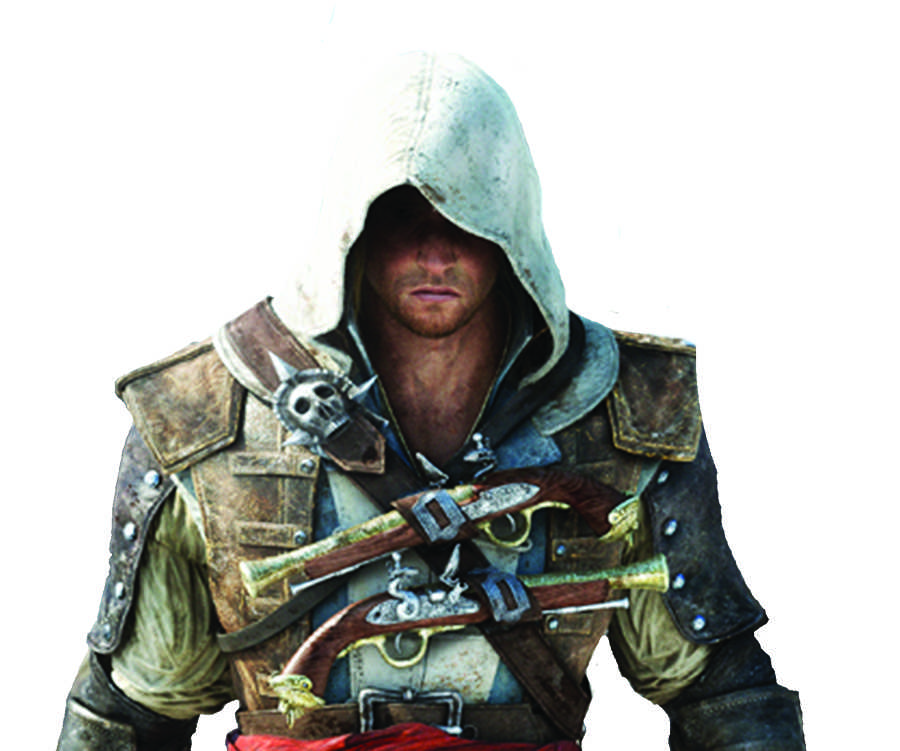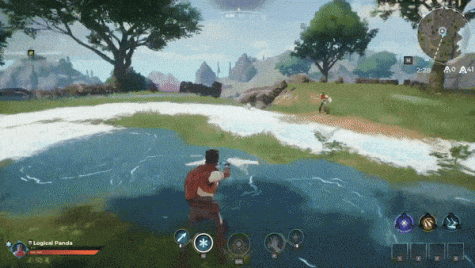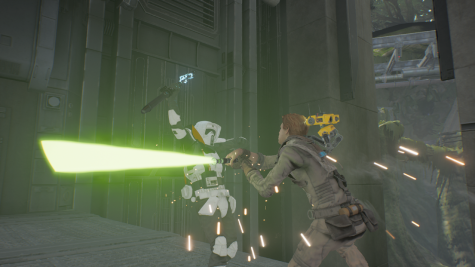“The Golden Age of Piracy” turns to a black flag
Imagine it is the year 1715, the Golden Age of Piracy, and all who surround you are local townspeople, merchants, and pirate hunters. Imagine you are an onlooker in the crowd, and in your visual are pirates ready to be hung to his death. The crowd is devastated from the commotion the pirates have caused: theft, shipwrecking, and a head count that affects multiple families. Right before the pirates face their death sentence, you see a cloaked figure fly off of a building, with blades and guns ready to free the crew. Next thing you know, you see sliced necks, gushing blood, dead bodies, and free pirates. The unidentified figure remains nameless, and all you are left with is assassin awareness.
“Assassin’s Creed IV: Black Flag” is the sixth game of the main Assassin’s Creed series, which takes place during the era of pirates. Taking place in the Caribbean, you play the role as Edward Kenway, a British pirate who is raised by the Assassin’s Order. The goal of the Assassin’s Order is to prevent the Knights Templar from controlling the minds of all humans, therefore controlling the world and reshaping the livelihood of humanity.
In previous games, the Assassin’s Order consisted of other master assassins that you could play as. Altaïr ibn-La’Ahad was an assassin in 1191, during the Third Crusade in the Holy Land of Israel. The descendant of Altaïr is the crowd favorite Ezio Auditore da Firenze, a Florentine nobleman during the time of the Italian Renaissance. After Ezio came “Black Flag’s” Edward Kenway, and backtracking to his son in “Assassin’s Creed III’s” Connor, a half-British half-Native American assassin who takes part in battle during the American Revolution.
This line of assassins all lead to their present day descendant, Desmond Miles, who is the link to saving humanity.
The Assassin’s Creed series has made several successful attempts into connecting each assassin’s stories, which brings us to the story of Kenway. In addition, previous game play qualities along with new features have enhanced the game into a more interactive, real life simulation.
The use of a gun and dual blades make more assassinations appealing for the screen. The hidden gun was introduced during the time of Assassin’s Creed “Revelations”, but was not brought back in “Assassin’s Creed III”. In addition, the guns and swords fit appropriately for the pirate theme. Flintlock pistols, cannons, and swivels on ship battles are all within a gamer’s selective range for gunplay.
Stealth assassination brings us back to the previous games, adding back two hidden blades, smoke bombs, and my personal favorite, the throwing knives. The knives to me were always a one-hit K.O. This weapon always seemed overpowered, and seemed to be the easiest way to be stealthy within the game.
However, the blow darts, the newly added weapons to your repertoire, makes your enemy either defenseless, or to your offensive advantage. The sleep darts can easily knock out an enemy, making them vulnerable to a simple kick to the groin. The berserk darts are used to have your enemy enter an uncontrollable state that can have them fighting themselves and other enemies.
Aside from the new weapons, the pirate life is what differentiates this game from the others. Ubisoft ensured that what we depict as the “pirate life” very well.
Previously, we were only able to obtain money and treasure by simply searching the city walls. Now, they’ve added treasure maps.
What’s a pirate game without treasure maps? Gamers are able to obtain treasure maps, pilfering them off of several dead pirate bodies throughout the game. Of course, you’ll have to search for the treasure on your own, which is usually hidden underneath piles of sand that you’ll inevitably end up stepping on without noticing where the “X” marks.
Money, power, respect, and treasure cannot be held accountable by only one pirate, but rather how well a pirate is able to control his crew and his ship.
Introduced in “Assassin’s Creed III”, ships have become the basis of entertainment of this game. I was amazed to see that I was able to upgrade my ship, grab crewmembers, and most especially, battle and board ships for my own personal needs. It’s the part of the game that makes “Black Flag” significantly different from the others.
The scenery of “Assassin’s Creed IV” does not fail to convey the pirate theme. Aside from the obvious water of the seas, the game supplies what seems to be an endless amount of islands, jungles, and Caribbean civilizations.
There won’t be a time when you won’t run into a flash storm in the middle of the sea. There won’t be a moment when you don’t notice twisters jetting out from the sky. Buildings made of wood, offshore boats, drunken pirates, and animals available for hunt all add up to the real pirate life simulation this game has to offer.
One new aspect of the game are the underwater missions. For the first time in the franchise, players will get to explore underwater territories and discover treasure submerged underneath ships.
Returning from “Assassin’s Creed III”, “Black Flag” continues with the ability to hunt. Previously, deer, bears, and rabbits were animals available for hunting and creating necessities for survival. However, “Black Flag” introduces a new set of hunting animals, including howler monkeys, boars, sharks, and whales.
Of course, what is scenery if the pirate you control is not eye appealing? Gamers are allowed to switch Kenway’s attire. In addition to the pirate outfits available for Kenway, those who have followed Assassin’s Creed from the beginning are allowed to equip the outfits of Altaïr, Ezio, and Connor. Imagine a middle-Eastern, Italian, or Native-American clothing line being worn around the seven seas.
I was quick to put on Ezio’s attire, but it did look awkward seeing a pirate with Italian robes roaming around the Caribbean. I really enjoy the new clothes that Ubisoft urges you to get for Kenway. Obtaining special items like the Templar Keys, and solving puzzles for Mayan artifacts reward you with even more special outfits.
With the outfits in place, Ubisoft does not fail to add them in when cinematic gameplay is involved. As usual, the cinematic storyline for “Assassin’s Creed IV” supplies a clear gaming experience, both graphically and anecdotally. Detailed textures create a realistic setting, along with background noises of town folk talking, birds chirping, and the frequent sailor slander being used throughout the game.
Overall, “Assassin’s Creed IV: Black Flag” is placed in the upper echelon for Assassin’s Creed fans. Combining several aspects from the other games attracts new crowds while keeping the experiences that fans have likes throughout the series.
It is the best Assassin’s Creed amongst the main series since it combines so many aspects from each game. If you’re a fan of all the old games of the franchise, or if you are just being introduced to the series, you’d be in for more than treasure on your journey with the Black Flag.
When the old meets the new, better things are sure to come out of it.




















